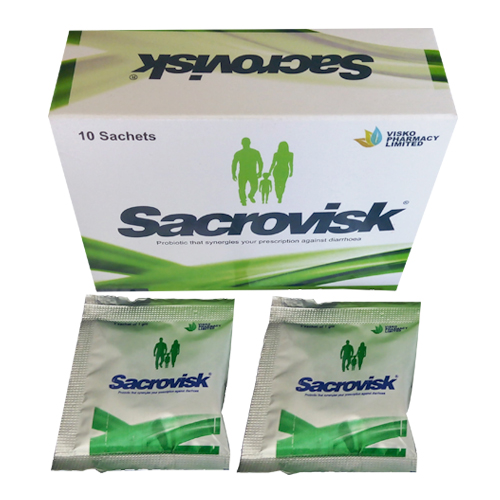SACROVISK
SACCHAROMYCES BOULARDII 250 MG
Saccharomyces boulardii is a non-pathogenic probiotic yeast produced by a patented process which enables it to survive gastric acidity and resist proteolysis. The optimal temperature for its proliferation is around 30ºC and it can quickly reach a high concentration in the gastrointestinal tract – an ideal breeding ground – where it remains at a constant concentration in its viable form. It is neither damaged nor inhibited by antibiotics and does not upset the natural balance of intestinal flora.
Saccaromyces boulardii acts as temporary flora to protect and maintain healthy function of the gastrointestinal tract. It works with the body to restore microflora. It produces lactic acid and B vitamins in the intestines and displaces problematic yeast species. It is eliminated within a few days once supplementation is stopped.
Physiological studies in cell cultures, animal models and humans have highlighted the various mechanisms of action by which Saccaromyces boulardii eradicates pathogenic agents, inhibits toxins and restores the absorption capacity of the small intestine’s mucosa.
They include :
- competitive inhibition for adhesion sites
- inhibitory effects on toxin-induced secretions
- inhibition of binding to receptors by toxins
- immunological effects
- stimulation of the intestine’s immune response
- trophic effects on intestinal mucosa
- release of polyamine
Saccaromyces boulardii has been used in Europe for years to treat diarrhoea :
- clinical trials have shown that it effectively prevents and treats diarrhoea resulting from
antibiotherapy
-
- diarrhoea is the most common side effect of enteral nutrition. Studies show that adding Saccaromyces boulardii to nutritional solutions as a preventive measure halved the incidence of digestive problems
- other studies suggest that it supports intestinal function in a number of situations, including food allergies, Crohn’s disease, traveller’s diarrhoea, HIV-associated diarrhoea, and the presence of parasites, salmonella, Candida or Pseudomonas
- clinical trials have demonstrated the protective effect of Saccaromyces boulardii in intestinal infections including cholera and Clostridium difficile.

